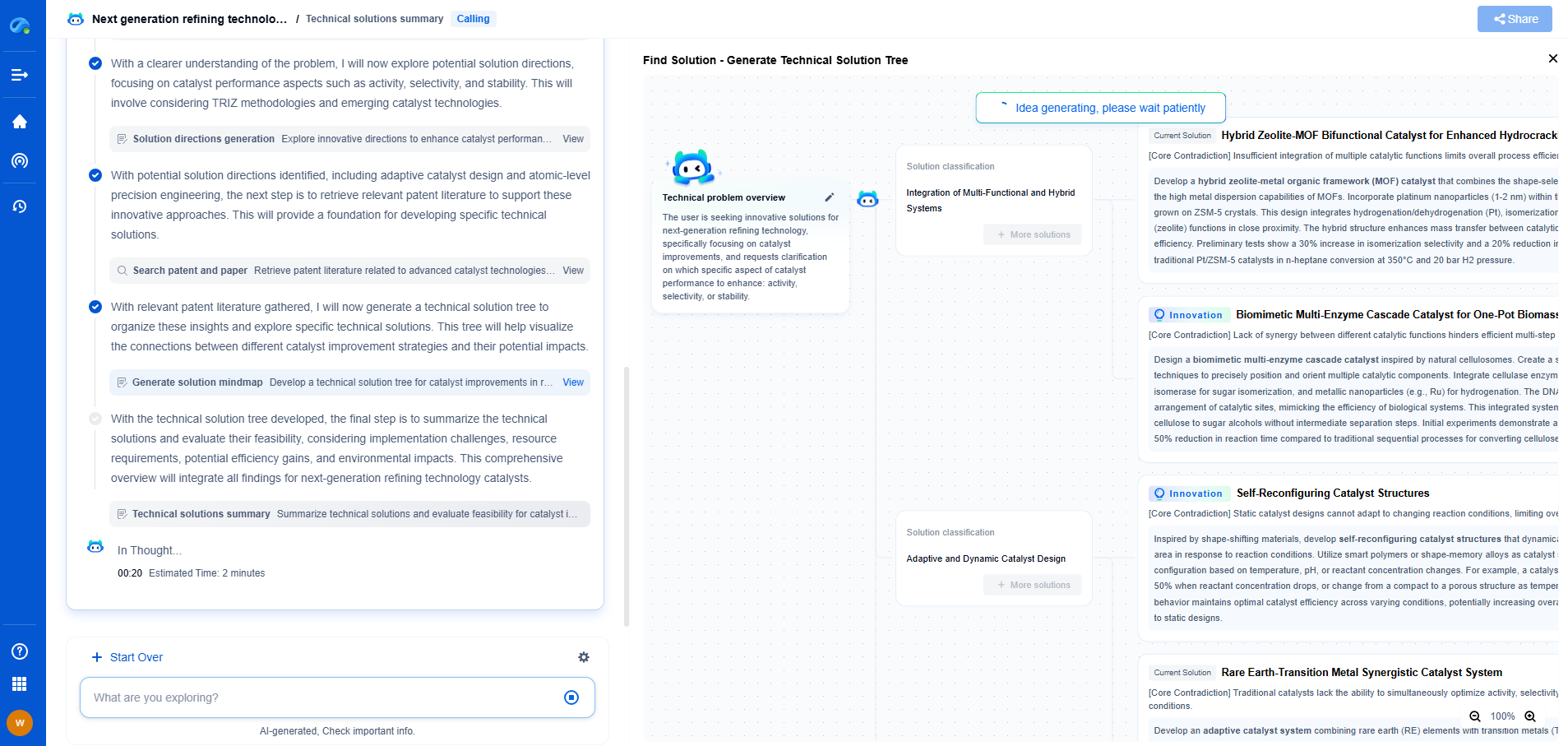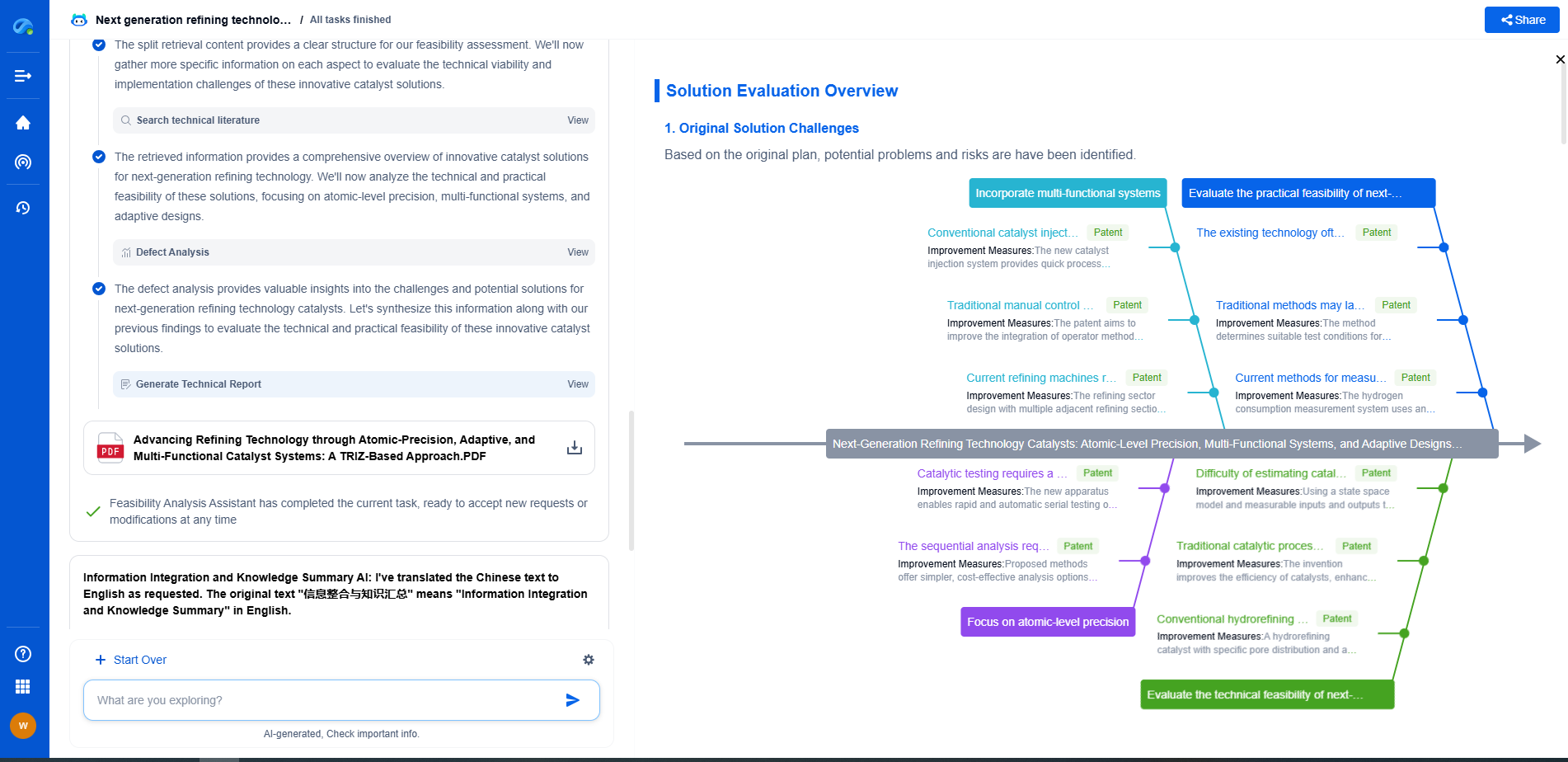Which Materials Are Best for Hydrogen Pipeline Construction?
JUN 20, 2025 |
Understanding Hydrogen's Properties
Before delving into the specifics of materials, it's essential to understand the properties of hydrogen that influence pipeline construction. Hydrogen is the lightest element, and its small molecular size allows it to permeate through many materials. It is also highly flammable and can cause embrittlement in certain metals, making material selection critical to ensuring safety and integrity.
Steel: The Traditional Choice
Steel has long been the material of choice for pipeline construction due to its strength, durability, and cost-effectiveness. However, hydrogen embrittlement poses a significant risk when using steel, especially high-strength varieties. This phenomenon occurs when hydrogen atoms diffuse into the metal, causing it to become brittle and prone to cracking.
To mitigate these risks, particular types of steel, such as stainless steel or specially coated carbon steel, are used. These variants offer increased resistance to embrittlement, though they can be more expensive. Innovations in steel manufacturing continue to enhance its suitability for hydrogen pipelines, making it a viable option for many applications.
Polyethylene and Composite Materials
Polyethylene, a type of plastic, has emerged as a promising alternative for hydrogen pipelines, especially for low-pressure applications. It is lightweight, flexible, and resistant to corrosion. Unlike metals, polyethylene does not suffer from hydrogen embrittlement, which can significantly reduce maintenance needs and enhance longevity.
Composite materials, which combine different materials to leverage their strengths, are also gaining traction. These materials can include layers of polyethylene reinforced with carbon fibers or other substances, providing high strength and durability while minimizing the risks associated with metal embrittlement. Composite materials are particularly advantageous for more complex pipeline designs or challenging environments.
Copper: An Unconventional Option
Copper is less commonly used for hydrogen pipelines but presents unique advantages. It is highly resistant to hydrogen embrittlement and corrosion, making it an excellent candidate for specific applications. Copper's ductility allows it to be easily shaped and installed, though its higher cost compared to steel or polyethylene may limit widespread use.
Considering Safety and Environmental Impact
Material selection for hydrogen pipelines is not solely about technical compatibility; it also involves safety and environmental considerations. Composite and polyethylene materials may offer environmental benefits due to their ease of recycling and lower energy requirements during manufacturing. However, the potential for plastic degradation and microplastic pollution must be carefully managed.
Steel and copper, while more energy-intensive to produce, are readily recyclable and have long lifespans. Choosing the appropriate material involves balancing these factors to align with sustainability goals and safety standards.
Innovations and Future Directions
The field of hydrogen pipeline materials is continuously evolving, driven by advances in material science and engineering. Researchers are exploring new alloys, coatings, and composite designs to enhance performance and reduce costs. The integration of smart technologies into pipeline materials, such as sensors and self-healing coatings, represents an exciting frontier that could revolutionize pipeline maintenance and safety.
Conclusion
Constructing hydrogen pipelines requires a nuanced understanding of hydrogen's properties and the strengths and weaknesses of various materials. Steel, polyethylene, composite materials, and copper each offer distinct advantages and challenges, making them suitable for different applications and environments. As the hydrogen economy expands, ongoing research and innovation will be critical in optimizing pipeline materials for safety, efficiency, and sustainability. By carefully selecting the right materials, we can ensure the reliable and secure transportation of hydrogen, supporting a cleaner and more sustainable energy future.
Transform the Way You Innovate in Pipeline Technology—with AI-Powered Intelligence
From corrosion-resistant materials to smart monitoring systems and advanced flow control mechanisms, the pipeline industry is undergoing rapid technological transformation. Yet keeping up with evolving engineering solutions, regulatory landscapes, and competitive patents can be a major bottleneck for R&D and IP teams.
Patsnap Eureka is your AI-powered research companion—built specifically for professionals in high-tech and infrastructure domains like pipeline technology. Whether you're designing high-pressure transport systems, assessing trenchless installation innovations, or safeguarding proprietary flow assurance solutions, Eureka provides real-time insights into global patent trends, emerging technologies, and R&D intelligence—all in one intuitive interface.
Empower your team to innovate faster, reduce technical blind spots, and stay ahead of industry shifts. Discover Patsnap Eureka today and bring clarity and confidence to your pipeline technology decisions.
- R&D
- Intellectual Property
- Life Sciences
- Materials
- Tech Scout
- Unparalleled Data Quality
- Higher Quality Content
- 60% Fewer Hallucinations
Browse by: Latest US Patents, China's latest patents, Technical Efficacy Thesaurus, Application Domain, Technology Topic, Popular Technical Reports.
© 2025 PatSnap. All rights reserved.Legal|Privacy policy|Modern Slavery Act Transparency Statement|Sitemap|About US| Contact US: help@patsnap.com

